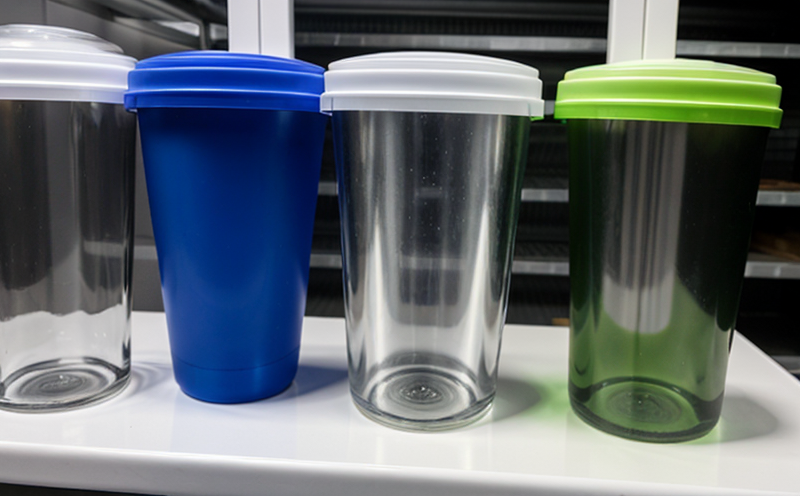ISO 1103-3 Annealing Point Confirmation
The ISO 1103 series of standards is pivotal in ensuring that glass packaging materials meet the necessary quality and safety requirements. This service specifically addresses Annealing Point Confirmation (Clause 5, Part 3). The annealing point is a critical characteristic for glass products as it defines the temperature at which residual stresses within the glass structure are fully relaxed, ensuring the product's integrity during handling and use.
The annealing process is essential in glass manufacturing to reduce internal stress. Excessive stress can lead to cracking or breaking under thermal shock or mechanical stress. The confirmation of the annealing point ensures that the glass packaging meets safety standards and performs as expected throughout its lifecycle. This test is particularly important for glass containers used in food, beverage, and pharmaceutical industries where durability and integrity are paramount.
The ISO 1103-3 standard provides a standardized method to determine the annealing point by subjecting specimens of glass to a series of temperature changes under defined conditions. The process involves heating the specimen to a specific temperature and then rapidly cooling it (quenching). The temperature at which the specimen no longer shows any signs of structural change upon quenching is recorded as its annealing point.
This test is crucial for manufacturers who need to ensure that their glass packaging meets international quality standards. It helps in identifying potential defects or inconsistencies in the manufacturing process, ensuring consistent product quality and customer satisfaction. The accuracy of this test can significantly impact the longevity and safety of the final product.
The testing procedure involves several steps:
- Selection of appropriate glass specimens that are representative of the intended production batch.
- Heating the specimen to a temperature just below the annealing point (typically 20-30°C lower).
- Quenching the specimen rapidly to reduce the internal stress.
- Observation and recording of any signs of thermal shock or residual stress within the glass structure after quenching.
The results are compared against the ISO 1103-3 standard, which provides acceptance criteria for determining whether the annealing point has been achieved. Compliance with these criteria ensures that the product is safe and reliable for its intended use.
Our laboratory adheres strictly to this process, using state-of-the-art equipment to ensure precise temperature control and accurate measurement of thermal properties. This approach guarantees consistent and reliable results, providing confidence in the quality of your glass packaging products.
Applied Standards
| Standard | Description |
|---|---|
| ISO 1103-3:2018 | Determination of annealing point by thermal shock test. |
| ASTM C770 | American Society for Testing and Materials standard on testing methods for glass containers. |
| EN 12358-4 | European standard for testing the annealing point of glass containers. |
The ISO 1103-3 standard is widely recognized and implemented across various industries, ensuring that glass packaging meets international standards. This standard specifies a method to determine the annealing point by subjecting specimens to thermal shock tests. The test involves heating the specimen to just below its annealing temperature, quenching it rapidly, and observing any signs of stress or cracking.
Our laboratory utilizes this standardized approach to provide accurate and reliable results. By adhering strictly to these international standards, we ensure that your glass packaging products meet the highest quality and safety requirements.
Customer Impact and Satisfaction
- Increased Product Reliability: Ensuring compliance with ISO 1103-3 guarantees that your glass packaging will perform consistently across various environmental conditions, reducing the risk of failure.
- Enhanced Customer Trust: By meeting international standards, you can provide customers with products they trust to be safe and durable. This enhances brand reputation and customer loyalty.
- Regulatory Compliance: Meeting these standards ensures that your packaging complies with global regulations, avoiding potential legal issues or product recalls.
The ISO 1103-3 test is a critical step in the quality assurance process. It helps manufacturers identify potential issues early in the production cycle, reducing waste and improving overall efficiency. Our service ensures that your glass packaging meets these high standards, providing peace of mind for both you and your customers.
Environmental and Sustainability Contributions
- Eco-Friendly Materials: Ensuring the integrity of glass packaging through this test helps prevent waste by reducing the likelihood of breakage during transportation or use, thus minimizing material loss.
- Reduced Energy Consumption: By identifying and rectifying issues early in the production process, this service helps to optimize energy usage in manufacturing processes, contributing to a more sustainable approach.
The ISO 1103-3 annealing point confirmation is not just about product quality; it also plays a role in environmental sustainability. By ensuring that glass packaging meets strict standards, we help reduce waste and promote efficient use of resources. This service supports the broader goal of sustainable manufacturing practices.





